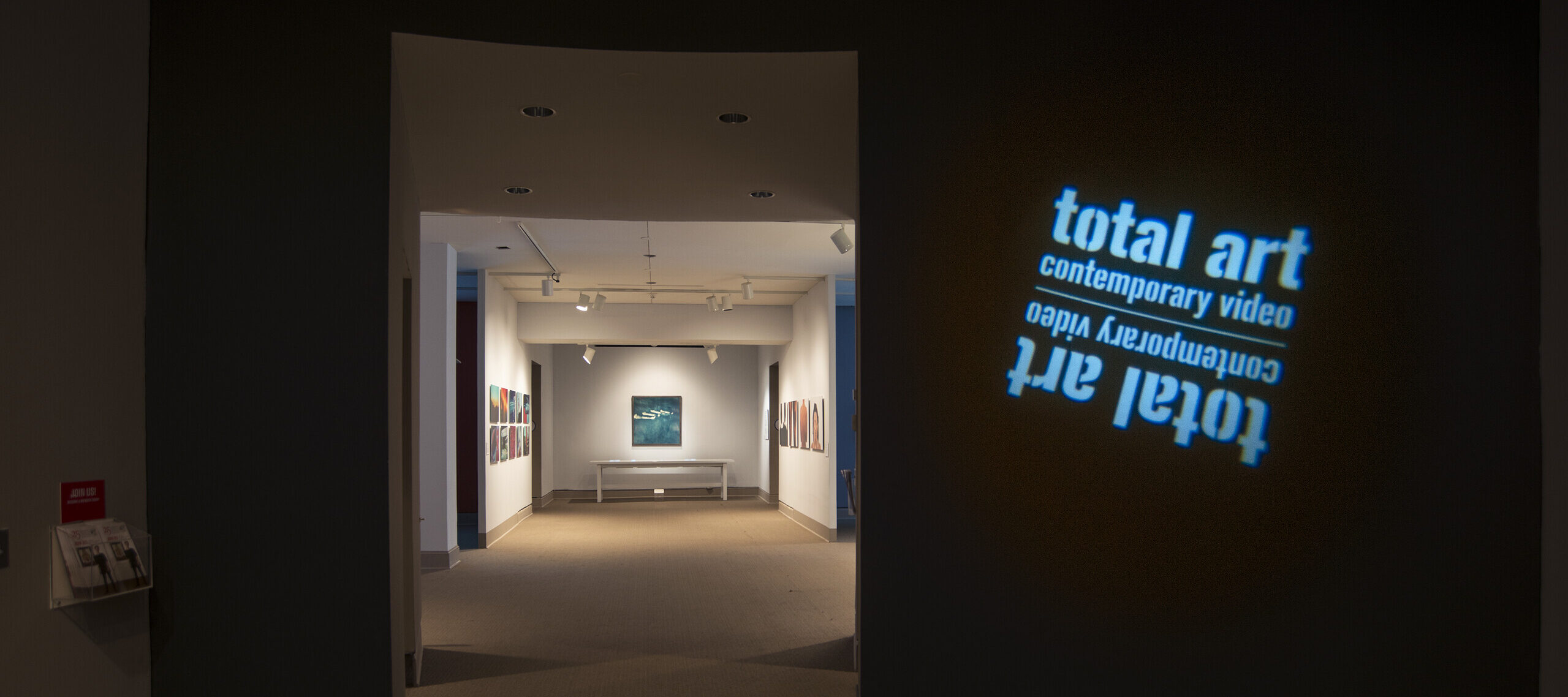On view in Total Art: Contemporary Video, Dara Birnbaum’s Technology/Transformation: Wonder Woman (1978–79) opens with several minutes of footage showing intense explosions, transformations, and sampled disco tunes. Just as a viewer becomes comfortable with the repeating imagery, the camera turns to the super-heroine as she bumps into a surprised friend and says, “We’ve got to stop meeting like this.” It the only segment in the nearly six-minute video work in which the main figure speaks; the rest is all action.

Dara Birnbaum (b. 1946, New York) used this abbreviated dialogue in her single-channel video work with a specific goal in mind. As the earliest work in Total Art, Birnbaum’s video serves as an example of the genesis of the medium, but her work is distinct from that of other video artists. Rather than create new recordings with a video camera, Birnbaum repurposed footage from the CBS television show Wonder Woman (1975–79). Critics have often noted that many video artists use television’s technology and language to create works detached from the medium, but here Birnbaum directly incorporated television as both her subject and form.
Provocation is at the heart of Technology/Transformation: Wonder Woman. In highlighting the technological transformation and repeatedly showing the footage, Birnbaum awakens viewers to the sexualized and violence imagery that was shown in the television series but rarely questioned. In 1983, a few years after completing Technology/Transformation: Wonder Woman, Birnbaum wrote an article that expanded upon her video work and the goals. She states:
Much of the videowork completed from 1978 to 1982 had been an attempt to slow down ‘technological speed’ and to ‘arrest’ movements of TV-time for the viewer. For it is the speed at which issues are absorbed and consumed by the medium of video/television, without examination and without self-questioning, that remains astonishing…By dislocating the visual and altering the syntax, images were cut from their original narrative flow and then countered with additional musical texts. The viewer was to be caught in a limbo of alteration where he/she was able to plunge headlong into the very experience of TV—unveiling TV’s stereotyped gestures of power and submission, of self-presentation and concealment, of male and female ego.¹
The explosive Technology/Transformation: Wonder Woman asks viewers to take another look at the technologies and images that create such perspectives. To learn more visit NMWA on Wednesday, June 25, at noon, for one of our weekly staff-led gallery talks. Put your lunch break to good use and join Director of Education Deborah Gaston as she facilitates a 30-minute discussion and viewing of Birnbaum’s iconic Technology/Transformation: Wonder Woman.
Notes:
1. Dara Birnbaum, from “Watching Television: A Video Event Conference,” October 1983, as quoted in Robin Reidy, “Pop-Pop Video,” American Film (January/February, 1985), 61.
